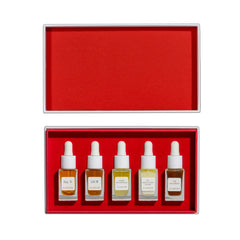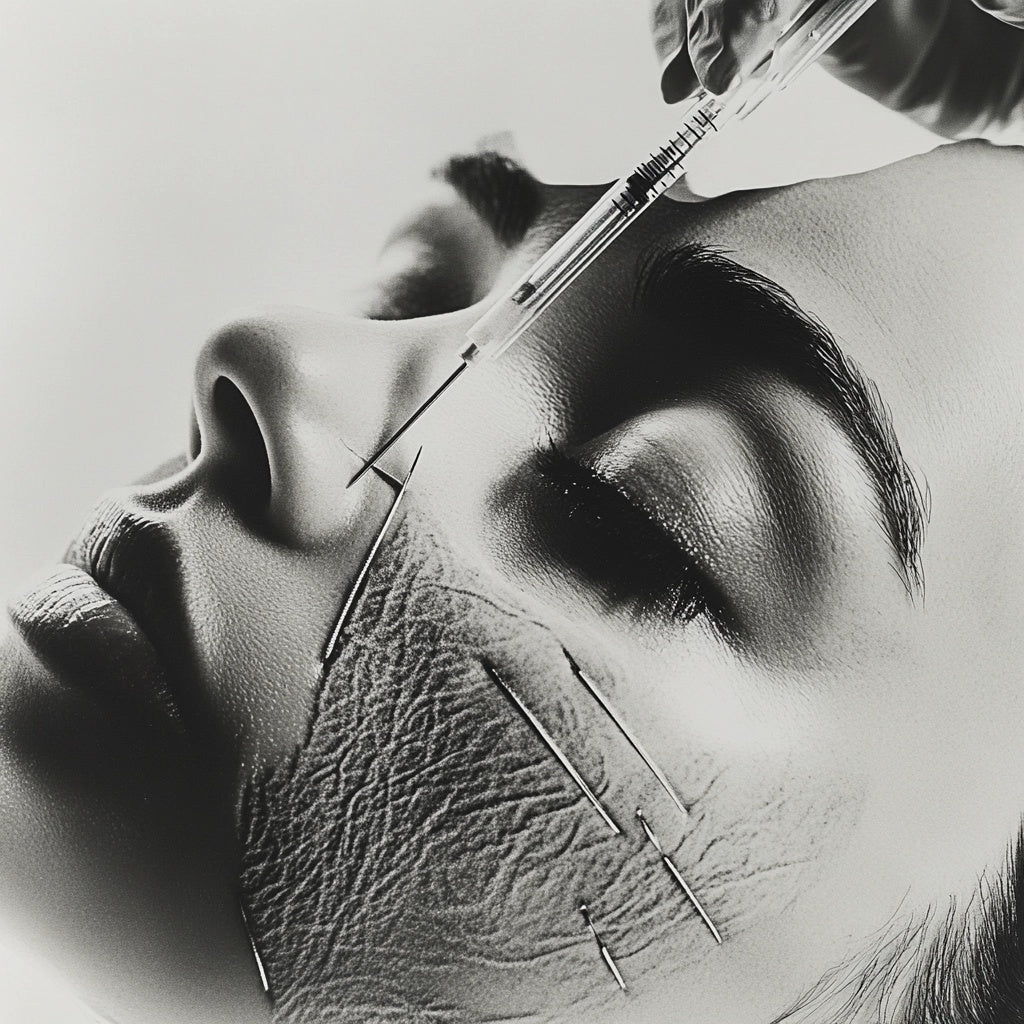Microneedling, Barrier Breakdown & the Biology of Recovery
What our lab observed on human skin samples—and the precise OUMERE protocol to restore equilibrium.
No Trends. No Damage.
I first wrote about the long-term risks of microneedling years ago after a wave of consultations from clients seeking help post-procedure. To examine the biology, I conducted follow-up microscopy on human skin specimens. The results are published here and shown below.

Despite social media promotion and clinical settings offering the service, forums tell another story: worsening texture, chronic redness, heightened sensitivity, and delayed-onset issues. As a biologist, I’ll be direct: in healthy adult skin, “new collagen” outside normal extracellular matrix formation typically represents repair, not rejuvenation—and often, scar-leaning collagen. The “post-treatment glow” is frequently inflammation.
What Microneedling Actually Does
Microneedling punctures the epidermis thousands of times to create controlled wounds. If the environment is not biologically favorable, healing is imperfect: barrier lipids are disrupted, TEWL rises, and the skin becomes more susceptible to irritation, pathogens, and accelerated visible aging.
The Delayed Fallout
Damage may surface weeks to months later, especially after multiple sessions—an accumulation effect. Post-procedure product choices often intensify the problem:
- Unstable vitamin C, strong acids, or nightly retinoids on freshly injured skin
- Fragrance or essential oils during the recovery window
- Alkaline or stripping cleansers; poor hygiene
- No true barrier support (insufficient humectant/lipid balance)
Signs Your Barrier Is Compromised
- Stinging with plain water
- Persistent dryness despite “moisturizer”
- Redness, shininess, flaking that lingers
- New breakouts, reactive patches, or visible sensitivity
The OUMERE Protocol for Post-Microneedling Recovery
Recovery is not about more products—it’s about the right environment. Minimalist, fragrance-free, barrier-respectful care allows biology to do the work.
First 72 Hours
- Serums only, diluted: The Advancement (diluted) + 2–3 drops Serum Bioluminelle for slip and comfort. Avoid exfoliants, vitamin C, and retinoids.

Days 3–7
- AM: Diluted UV-R + diluted Advancement + sparing Bioluminelle.
- PM: Oil Dissolution Theory (single cleanse), The Eye Serum on darkened spots as tolerated, Advancement II, then 2–3 drops Bioluminelle.

Week 2 Onward
- AM: No. 9 (light, diluted; 60 seconds max), then UV-R, Advancement, Bioluminelle.
- PM: Oil Dissolution Theory, Eye Serum (spot use), Advancement II, Bioluminelle.
Long-Term Maintenance
- Maintain a minimalist, barrier-first regimen; avoid cyclical “injure/repair” fads.
- Reserve actives for calibrated use; keep fragrance/essential oils out of leave-ons.

Final Thought: Skin isn’t a machine. Treat it like a living organ, and it will reward you.
Shop the Recovery Protocol


